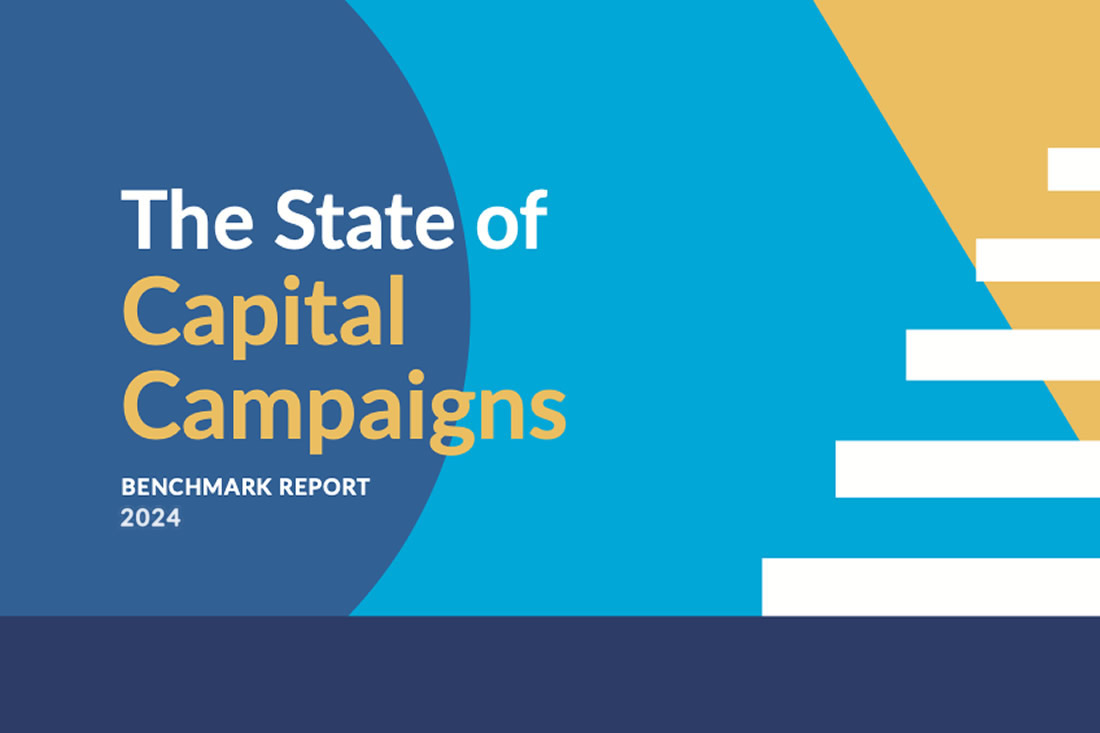The Winning Formula for Capital Campaign Success: Optimism + Analysis

Is there a formula for capital campaign success? Absolutely!
Whether your campaign will be successful (or not) depends on your ability to have the courage to set big goals and then temper that unbridled optimism based on clear headed analysis.
In fact, capital campaigns are designed to encourage you to start with big goals and then adjust them as the results of your top solicitations become real.
Capital Campaigns Are Full of Calculated Risk
In many campaigns, the ten top gifts account for well over 50% of the campaign goal. And while it’s wonderful when you’re certain of those top gifts very early in your campaign planning, for most campaigns, those big gifts aren’t definite for quite some time.
The biggest risk — early lead gift commitments
You may have one large donor who has made a very early verbal commitment for the lead gift. And you probably have a short list of people that you think are good prospects for those next leadership level gifts.
But you won’t know whether those prospects will really make those big gifts until you ask them. And that’s likely to take quite some time.
So, there’s a good bit of risk in most campaigns — risk that the ambitious goal you began with may not, in reality, be possible. Because if just two or three of those top ten gifts turn out to be well below what you had hoped for, you may find yourself wondering how you will ever reach that original ambitious goal.
Does that mean that you shouldn’t start with an ambitious goal?
No! Even though it’s risky, you should set an ambitious goal. Because if you don’t reach for the edge of what is possible, you (for sure) won’t get there.
So, aim high and be ready to decrease the goal if that’s what’s required.
Won’t a Feasibility Study reduce the risk of setting the goal too high?
Yes! Talking to your largest donors in a feasibility study will give you an indication of what might be possible. But in every feasibility study, some donors aren’t ready or willing to indicate what they might give when the time is right.
You’ll get a sense of how they feel about your project and your organization, but you may not get a solid indication of how much they’ll give.
A feasibility study should significantly reduce the risk of setting the goal too high or too low. That said, there’s still some risk that you might not get the top gifts you need to reach your goal.
Capital Campaigns Offer Surprising Rewards Too
However, for many campaigns, that all-important quiet phase, during which you solicit the largest gifts, yield some positive surprises too.
- Sometimes donors you thought were going to give at one level actually make gifts that are higher than you might have imagined.
- You may also find that the list of donors to ask for large gifts grows during that early phase as well. Early donors might lead you to other donors who are not yet involved.
- And you may find some surprising gifts among people you were less sure of.
If your campaign is fortunate, with few setbacks, and your leadership gift level donors come through better than you had anticipated, you may find yourself in the remarkable position of being able to INCREASE the campaign goal.
But, if you aren’t so fortunate, and after soliciting most of the largest gifts you find that you don’t see a clear path to the original goal, you may have to make some other adjustments.
3 Options When You Don’t See a Path to Goal
After you’ve solicited your top donors and you don’t see a clear path to the original working goal, you have three options:
- You can reduce your campaign goal.
- You can extend your campaign timeline.
- Or you can do both — lower the goal and extend the campaign timeline!
Whatever strategy you choose, your plans must be based on careful analysis of what the real potential is. Look carefully at the donors you have not yet reached at every level of your campaign. Assess the high and low for what they might give and then determine what you think is the realistic potential.
Resist the temptation to put much stock in your hope for a magical gift from someone you don’t yet know. Instead, rely on real assessments of qualified donors.
Also, resist the temptation to think that you can make up in small gifts at the end of your campaign what you didn’t raise during the leadership phase. Low level gifts seldom lead to more than 5 or 10% of the campaign goal.
Mapping Your Path to Goal
Mapping your path to goal is complicated. For every gift, you’re likely to have several qualified prospects. You should consider the likelihood of each of those prospects giving at the level at which they are asked.
If you have enough prospects for each gift, you’ll find alternative paths to reach your campaign goal. But if you can’t identify prospects, that will be a clear indicator that you’ve got to consider reducing the goal.
Getting from Working Goal to Published Goal
During the entire “Quiet Phase” of your campaign, you should use a dollar goal that will never be announced or publicized — your working goal. Knowing that the goal might change, you should mark all your material “DRAFT” so that you can adjust the campaign goal if necessary.
But as you plan the kick-off for the public phase of your campaign, you’ll have to decide what goal you will announce publicly.
The goal you announce should be achievable!
That means that you should set a goal that is no longer risky.
A chief way to make sure your campaign is successful is to adjust the goal before you kick off the public phase of your campaign.
There’s no shame in reducing the goal before the public phase. Campaigns are designed to allow that flexibility. The campaign model encourages you to test what might be possible and then adjust to the realities of your donors as they become clear.
Campaign Success is Based on Courage and Analysis
Your campaign will be successful if you have the courage to shoot for an ambitious goal and then adjust to the realities you’ve found as you’ve solicited those large gifts. You might even say it comes down to this winning formula:
Capital Campaign Success = Unbridled Optimism + Cold Hard Analysis
Simply put — if you push the edges of what’s possible and set an optimistic campaign goal, then carefully adjust that goal, you and your campaign will find success!



Amy, I have the highest regard for you, Andrea and the Toolkit. You are providing amazing resources to our field.
I know you will want to fix the little typo in the Feasibility Study section:
That said,r
Thank you so much, Randa. I fixed it! I appreciate that you let us know. Those little errors pop up and are sometimes hard to spot.